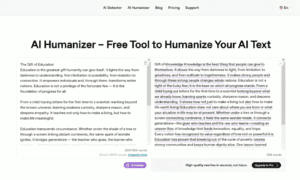“Half the money I spend on advertising is wasted; the trouble is, I don’t know which half.” Now as the marketers what’s concerning is that fact that half of us still relate to a 19th century’s statement by John Wanamaker’s. But now the question is how does the other half tackle this?
Now when you look at market insights accordingly to Gartner, you’ll find out that CMOs now invest more than a quarter (25.7%) of their overall budget into paid media. This spend is spread across a diverse mix of channels, including social advertising (10.1%), search advertising (9.8%) and digital display advertising (9.3%).
But with great budgetary power comes great responsibility. And hence the “other half” resorts to a properly applied, marketing mix modelling which improves the return of those significant investments.
Why? Because in recent years, especially with rise of omnichannel marketing the need to integrate various touchpoints for accountability in marketing has never been higher. And as marketing budgets grow, so does the responsibility to ensure these funds are spent wisely. This is where AI-driven Market Mix Modeling (MMM) comes into play.
Benefits of having AI driven Market Mix Modelling for Budget Allocation
Where traditional models often struggle due to their due to their limited ability to account for non-linear relationships and interactions among variables, AI drive MMM helps marketers understand the impact of their investments by analysing complex interactions between various marketing channels.
In simple terms it processes vast amounts of data and identify patterns that reveal how different touchpoints contribute to sales. For instance, it can show how a customer’s engagement with a Facebook ad may influence their later search on Google, ultimately leading to a purchase.
These insights will clearly influence how you allocate your budget, but this is just the beginning. Here’s what you can achieve with advanced marketing mix modeling:
1. Scenario Planning
Running multiple simultaneous simulations to predict marketing outcomes under different budget allocation scenarios is obviously the people’s choice. Why so? Because it allows you to test “what-if” scenarios before committing resources. Which means you can create simulations to see how shifting budgets across channels might impact sales.
For example, if you’re thinking about shifting some of your budget from social media ads to email marketing, you can model that scenario and get a sense of what the results might be. This way, you’re not just guessing—you’re making informed decisions based on data.
-
Explainable AI (XAI) in Modern MMM
This one honestly is a personal favourite. With advanced AI tools like P.ai, marketers which usually worked in a black box are now diving deeper into their data than ever before.
- AI agents can continuously test multiple parameters simultaneously, moving beyond single-variable analysis
- Complex parameter interactions are analyzed to identify non-obvious relationships and synergies
- Results are presented in human-interpretable formats, making it easier for stakeholders to understand the reasoning behind recommendations
- Dynamic optimization allows for real-time adjustments based on performance feedback
So instead of focusing on a single variable, marketers can test multiple factors simultaneously—like messaging, audience targeting, and ad spend.
For example, if a particular ad copy performs exceptionally well during a holiday season, XAI can clarify why that specific approach worked, enabling marketers to replicate successful strategies and investment in future campaigns.
3. Channel Optimization
Now as discussed before, having AI-driven insights help identify which marketing channels yield the best results. Using advanced attribution modeling it considers both direct and indirect channel contributions.
Then there’s cross-channel impact analysis, which shows you how different marketing efforts support or compete with each other.
For example, are your social media campaigns helping your email marketing, or are they pulling in the same audience? This insight, especially when combined with marketing mix modeling, is super helpful for fine-tuning your ROI building strategies
Now what we are particularly excited to look at is how rise of new AI agents better the real-time performance monitoring and automatic budget reallocation recommendations
-
Multi-Modal Planning
Now where customers engage with brands across various touchpoints—social media, websites, emails—multi-modal planning becomes essential. Traditional attribution models often struggle with the complexity of these interactions. However, this changes with incorporation of multi-modal planning. Because we are look at –
– Integration of structured data (sales figures, campaign metrics) with semi-structured data (customer interaction logs, website analytics)
– Processing of unstructured data sources:
- Social media conversations and sentiment analysis
- Customer reviews and feedback
- Visual content performance
- Voice of customer data
- Real-time integration of customer feedback and social listening insights
- Dynamic adjustment of channel mix based on qualitative and quantitative signals
By continuously analysing performance data, businesses can shift budgets toward high-performing channels and away from those that underperform.
When AI meets Market Mix Modelling
For over a century, marketers have wondered which half of their advertising budget actually works. But today, the real question isn’t about figuring that out—it’s about being bold enough to let AI show you how to get 10x ROI. With new tools like multi-modal planning, real-time optimization, and predictive analytics, marketing is changing fast.
The real shift is just beginning. If you view marketing mix modelling as just a way to measure performance, you’re missing the bigger picture. And firms may find they also lack internal expertise and access to data sources.
Hence, they may need to partner with specialized providers like Polestar Solutions who understand the nuances of the industry because it’s not only about managing your budget effectively—it’s about understanding how people think and make decisions. In the fast-changing world of marketing, the biggest mistake isn’t wasting money on ads—it’s waiting too long to embrace the future.





























